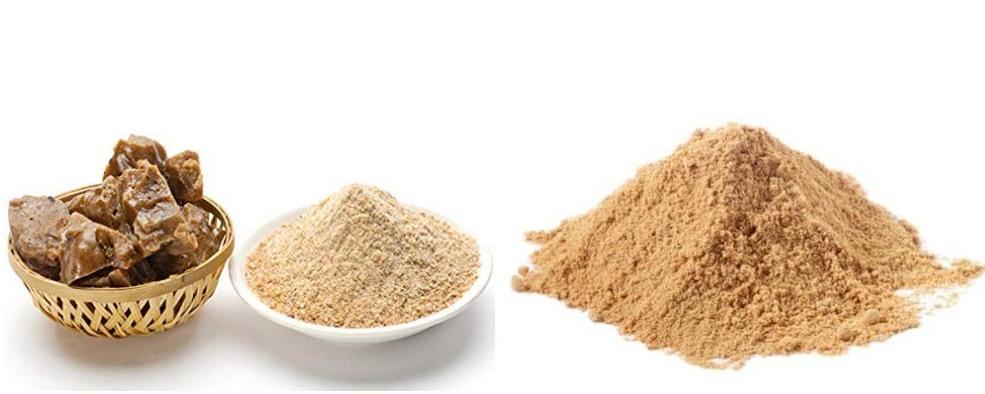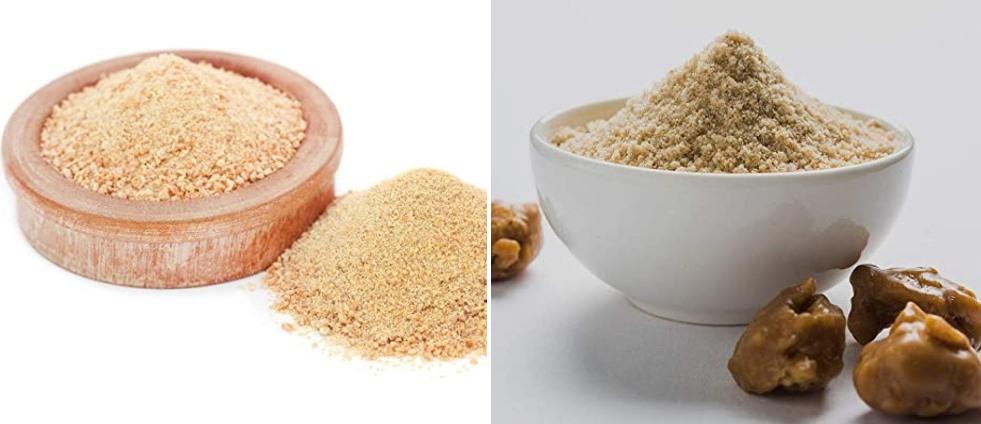Introduction to Hing Manufacturing Project Report (Asafoetida), Business Plan: Compounded Asafoetida, Hing business is one among the appropriate best business ideas for a young entrepreneur when they desire to initiate with a small investment on a small scale. In this post, you will get the complete steps on how to initiate a compounded Asafoetida or the Hing manufacturing business and its important aspects.
Asafoetida is a plant. It provides a pungent odor and tastes bitter. Asafoetida is often included in cosmetics and as a flavoring component in foods and beverages. In India, several recipes utilize Hing as an essential component.
Anyone can begin a Hing manufacturing business with less capital. The business can be easily operated in a small region and only take care of the product distribution.
The domestic market and the international market have a great demand for this Hing. The raw material for Hing manufacturing is acquired particularly from Afghanistan and Iran.
A guide to Hing Manufacturing Project Report (Asafoetida), Business Plan

Varieties of Hing: We have generally two main varieties of Asafoetida. They are Hing Kabuli Sufaid or Milky white Asafoetida and Hing Lal or Red Asafoetida. Asafoetida is acrid and bitter and imparts a strong displeasing pungent smell because it has sulfur compounds in it.
The white or pale variety is water-soluble, but the dark or black one is oil soluble. Since pure Asafoetida is not used as the flavor is very strong, it is mixed along with starch and gum and later sold in the market as compounded Asafoetida. It is even seen in powdered texture or tablet forms.
There is a high requirement for good quality compounded Asafoetida in the domestic and international market. The major importing countries are UK, Belgium, Yemen, Malaysia, Oman, Kenya, Switzerland, the UAE, and other countries.
Business plan for starting in manufacturing Business
Firstly, you to craft a perfect business plan for starting any kind of business unit which includes
- Implementation schedule
- List of approvals required
- Area required
- Raw materials
- List of machinery
- Manufacturing
- Project economics
- Profitability
Implementation schedule of HingManufacturing Business
- Market analysis and demand, applying for loan 0 – 1 month
- Preparation of business plan 1 – 2 months
- Financial support or investment 2– 4 months
- Selection of location and establishment of unit 3 – 4 months
- Power and water connection facility: 4 – 5 months
- Building construction and shed development 5 – 6 months
- Machinery and equipment purchase 6 – 7 months
- Procuring raw materials and recruiting of manpower 8 – 9 months
- Trial operations 10th month
List of licenses required to start Hing Manufacturing Business
Registration of firm: You may start your business either as a Proprietorship or as a Partnership company.
GST registration: It is obligatory to acquire the GST number for beginning any business, so, you have to apply for the GST too.
Trade license: It is simple to obtain a trade license by approacHing the state local organizations.
MSME/SSI registration: If you need any funds or some grants from the government then, MSME/SSI Registration is the best option to avail such relaxations for your business as they offer such schemes for support the businesses.
Trademark: Trademark registration is so significant to prevent any complications after starting your brand in the market so it’s noteworthy to have the trademark registration well in advance you begin the Hing manufacturing business.
Food Safety and Standard Authority of India (FSSAI): The Compounded Asafoetida or Hing is categorized as the food industry, hence, permission from FSSAI (Food Safety and Standard Authority of India), is compulsory for any food associated business, and Hing manufacturing is not an exception.
IEC code: When you are planning to export the processed Hing, it is mandatory to get the IEC code for exporting your product to other countries. Hence, obtain the IEC code before initiating the business.
Area required for establisHingHing Manufacturing Business Unit
Identifying the location for any venture is a vital task; hence you should be aware while selecting an area or place for the concerned business. You can start with a Hing manufacturing unit with an area of about 500 sq. ft. This location should be centrally located and must minimize the expenses of your transportation. This should be near to your target market and close to your raw material dealer. The place must have the necessary water and power supply options for the functioning of your unit.
Raw materials for Hing ManufacturingBusiness
The primary raw material for Hing’s business is Asafoetida in concentrated form. The quality concentrated Asafoetida is based on volatile oil content that imparts it the specific odor it has. The concentrated Asafoetida will be stored for a longer period if the moisture is less in it. Apart from that, plastic bags are used to store the concentrated Asafoetida.
The quality of the Hing relies on the raw material used during the concentrated Asafoetida. Hence, it is essential to be vigilant while buying the raw material used for the manufacturing of concentrated Asafoetida. It is suggested to contact the supplier who can deliver the best quality raw material at a reduced rate.
Hing manufacturing plant machinery
Moreover, one must keep in mind the provisions like water facility, power connection, and labors who have to operate the machines.
A few of the necessary machines are:
- Mixer Grinder
- Tableting machine
- Milling unit
- Packaging Unit
Cost of Hing Manufacturing Machine
A fully automated Hing manufacturing machine is available from Rs. 3 lakhs and some of the advanced machines are even purchased at Rs. 8 lakhs that have much more capacities than the basic models. Depending on the unit capacity and the capital you have it can be selected.
The manufacturing process of Hing
In case if you miss this: Neem Oil Manufacturing Project Report.

Compounded Asafoetida manufacturing process
Once the appropriate machinery is selected, the next process in the manufacturing of compounded Asafoetida is described in a stepwise manner.
Step 1: Soak in water: You have to take the pasty mass of Asafoetida and then soak it in water.
Step 2: Mixing: Next add the ingredients in the appropriate quantities by using a mixer grinder. Next, add the previously soaked slurry here and agitate properly.
Step 3: Milling: Now compounded Asafoetida will be made into a powdered texture using a milling machine.
Step 4: Tablet form: Generally, in the market, Asafoetida is seen in powdered form but can be made into tablet form by tablet making machine.
Step 5: Packaging: After these above steps are accomplished, the Hing powder or compounded Asafoetida will be packed in quality polythene bags by a packaging machine.
Hing Manufacturing Project Report/ Economics of small-scale Hing Manufacturing Business
You may also check this: Hing Farming Practices.
Fixed Capital
a. Land & Building: 600 Sq ft @ Rs. 10,000 Rented
b. Machinery and Equipment: Rs. 4,25,000
Working Capital
A. Staff and Labour: Rs. 1,72,000
B. Raw material per month: Rs. 1,76,675
C. Utilities per month: Rs. 8,000
D. Other Contingent Expenses per Month: Rs. 1,75,000
Total Working Capital per month = A + B + C + D = 1,72,000 + 1,76,675 + 8,000 + 1,75,000 = Rs. 5,31,675.
Total Capital Investment
Fixed capital = Rs. 4,25,000
Working Capital (on 3 months basis) = Rs. 15,95,025
Total = Rs. 20,20,025.
Financial analysis of Hing Manufacturing business
a. Cost of Production (Per Year): Rs. 66,24,603
b. Turnover (Per Annum): Rs. 72,00,000
c. Net Profit Per Annum:
Net Profit = Turnover per Year – Cost of Production = 72,00,000 – 66,24,603 = Rs. 5,75,397.
d. Net Profit Ratio = (Net Profit per year / Turnover per Year) X 100 = (575397 / 7200000) X 100 = 7%
e. Rate of Return = (Net Profit per year / Total Investment) X 100 = (575397 / 2020025) X 100 = 28.48%.
Break-Even Point (B.E.P.)
Interest on investment @ 10%: Rs. 2,02,003
40% of wages andsalaries: Rs. 68,800
40% of other expenses (except rent): Rs. 70,000
Rent: Rs. 1,20,000
Total: Rs. 4,60,803.
Break- Even Point (B.E.P.) = [Fixed Cost/ (Fixed cost + Profit)] X 100 = 460803/(460803+575397)X100 = 460803 / 1036200 X 100 = 44.47%.
- Handicraft Making at Home: A Small Profitable Business Idea
- Pet-Tech Startups: Innovations for Animal Lovers
- Tech Repair Services: Meeting the Demand for Gadget Maintenance
- Maximizing Rewards: Smart Credit Card Habits for Cashback and Points
- Ultimate Guide to Making Money from Goat Milk Business
- How to Start an Agricultural Value Added Product Business
- Value-Added Business Ideas for Greenhouse: The Best Ways to Make Profits with Greenhouse Farming
- How to Make Profits with Organic Country Chicken: Best Strategies for Beginners
- 10 Value-added Business Ideas for Millets: Low-investment and Highly Profitable
- Why Cleaning Service Business Becoming More Profitable in Metro Cities in India
- 10 Best Businesses to Start in Ayodhya for Profits
- Top Drone Business Ideas in India: Unlocking Aerial Innovation & Opportunities
- Top 10 Service Businesses You Can Start with No Money
- Ultimate Guide to Starting a Home-Based Advertising Agency Business
- Starting a Nail Salon Near Your Location: Check List, Business Plan, Licensing, and Opening Instructions
- Construction Company Name Ideas: Guide to Create New Construction Company Names
- 8 Best Small Businesses to Start in Hyderabad: Low-Cost and Profitable
- 10 Best Small Businesses to Start in Massachusetts: Low-Cost and Profitable
- 10 Best Small Businesses to Start in Maryland: Low-Investment and Profitable
- 10 Best Small Businesses to Start in Delaware: Low-Investment and Profitable
- 10 Best Small Businesses to Start in Connecticut: Low-Investment and Profitable
- Top 10 Best Online Pet Business Ideas: Exploring Cats to Dogs
- 10 Best Small Businesses to Start in Colorado: Low-Investment and Profitable
- Top 10 Profitable Small Business Ideas in California: Low-Investment Tips
- From Little Rock to Fayetteville: Top 10 Profitable Small Business Ideas in Arkansas
- Top 10 Profitable Small Business Ideas in Alabama: Discover Opportunities in Alabama’s Growing Cities
- Top 10 Profitable Small Business Ideas in Arizona: Discover Opportunities in Arizona’s Growing Cities
- Golf Business Ideas: Exploring Golf Course Money Making Ideas
- Low Capital Profitable Small Farm Ideas: Farming Ideas to Make Money
- How to Write a Business Plan for Daycare: Exploring from Financial Projections to Risk Management
- Home Daycare License Requirements: Exploring State-wise In-home Daycare Requirements
- How Profitable is Day Care Business: How Much Does a Daycare Owner Make a Month or Year?
- How to Open a Daycare Center in Toronto, Canada: Business Plan, Licenses and Permits